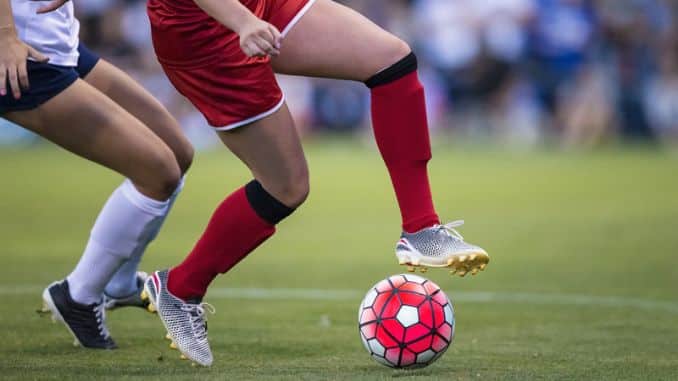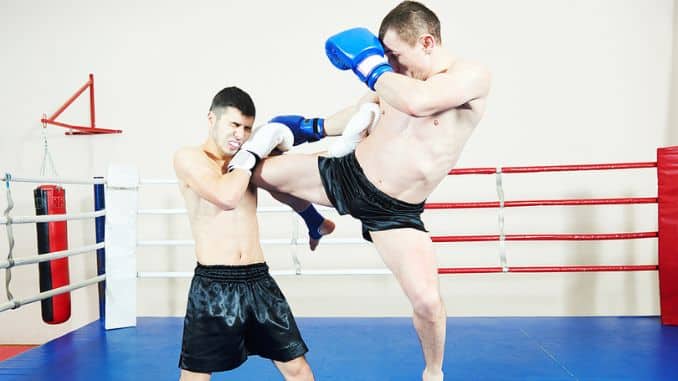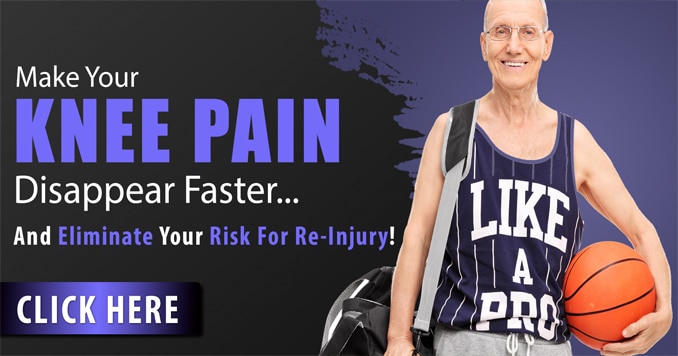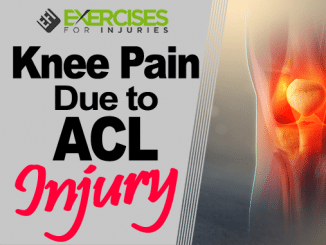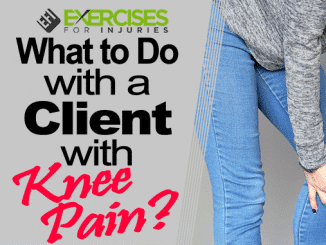
Anterior cruciate ligament injuries are common among athletes that participate in pivoting and cutting sports such as basketball, soccer, and hockey, as well as those who participate in contact sports such as football, rugby, and lacrosse. About one out of every ten people has a torn anterior cruciate ligament. These ligaments provide stability to the knee joint when we pivot our knees or cut quickly in one direction. An ACL injury often results in an audible pop and immediate pain. When you hear someone “pop their ACL,” it is because they have torn the ligament entirely instead of spraining it.
Anterior Cruciate Ligament Injuries: Mechanism of Injury and Causes
The ACL measures 31 to 35 mm in length and is believed to withstand about 2160 N or almost 500 pounds of pressure before failure or tearing (Weinstein & Buckwalter, 2005). The ACL can also withstand up to 25% of lengthening without failure in younger and healthy adults (Golofski, 2004). Normal activities apply about 454 N or 100 lbs of force on the ACL.
Hyperextension of the knee and the medial rotation of the tibia apply the most significant amount of force on the ACL. Hyperextension of the knee is the excessive straightening of the knee that forces the tibia forward about the femur. The medial rotation of the tibia is the exaggerated inward turning of the tibia. These positions also place the ACL at the highest risk for tearing or rupture.
Non-contact Injuries vs. Contact Injuries
When the ACL sustains forces beyond its capacity, tearing or rupture of the ACL occurs. The injury is commonly incurred from one episode, although repetitive strain to the ACL may also cause damage. The ACL is injured mainly through two mechanisms of injury: non-contact and contact.
Non-contact injuries
The most common mechanisms of ACL non-contact injuries include:
- Planting and cutting – abrupt or sudden alteration in direction or speed with the foot fixed on the ground
- Straight-knee landing – the foot strikes the ground with the knee straight
- One-step-stop landing with the knee in hyperextension – the leg abruptly stops as the individual with the knee in an excessively straightened position
- Pivot-shift – rapid slowing down followed by a quick turn in one direction with the feet securely fixed on the ground; the most common mechanism of injury.

The ACL injury results from applying indirect forces to the knee in these situations. And so, these injuries are classified as non-contact injuries. Non-contact mechanisms occur in 70 to 80% of ACL tears (Allen & Horn, 2010). The pivot-shift tool is the most common non-contact injury. The incidence of non-contact ACL injuries in female athletes is 4- and 6-fold higher than in male athletes.
Contact Injuries
The ACL is also injured through direct force or blow to the front of the knee and collisions that force the knee to hyperextend. Contact or traumatic mechanisms usually cause injuries to the surrounding structures. In addition to ACL, the medial collateral ligament and the medial meniscus are also damaged. Next to the pivot-shift mechanism, contact injuries are the most common mechanism of ACL injuries.
Signs and Symptoms
About 50% of individuals who sustained tearing of the ACL commonly report feeling a “popping” sensation or hearing a snapping sound at the time of the injury. In most cases of ACL tears, considerable bruising of the injured knee is observed within a few hours after the injury. If the ACL tear is minor, the pain may not be severe enough to discontinue the activity. Knee pain and stiffness are felt after the training with rest.
In more severe cases, excruciating pain in the involved knee is usually felt almost immediately after the injury. The pain is powerful enough to stop the activity and inhibit the weight bearing of the affected leg. In some cases, the pain may subside, only to recur a few hours later. A feeling that the knee is buckling or giving out is a common complaint. Within the first few hours of the injury, swelling and bruising may be extensive.
Other ACL injuries Articles
This is part 4 of my knee pain and knee injury series. I will be putting up the next part over the next few days. If you missed parts 1 to 3, Check the following articles:
If you are interested in knee pain, knee injuries, or ACL injuries, these other posts may interest you:
- ACL Injuries in Female Athletes
- 3 ACL Exercise Mistakes
- What to do about Knee Pain?
- To Leg Press or Squat if You Have an ACL Injury?
- NCAA and ACL Injuries
- Downhill Walking Good After ACL Surgery?
- Knee Injuries and Exercises with Kevin Yates
Suppose you are looking for stuff with more details on knee pain and ACL injuries. In that case, you can attend the live course called Exercise Rehabilitation of the Knee or instantly download my video presentation on Exercises for Prevention, Rehabilitation, and Overcoming Knee Injuries.
Rick Kaselj, MS
.

